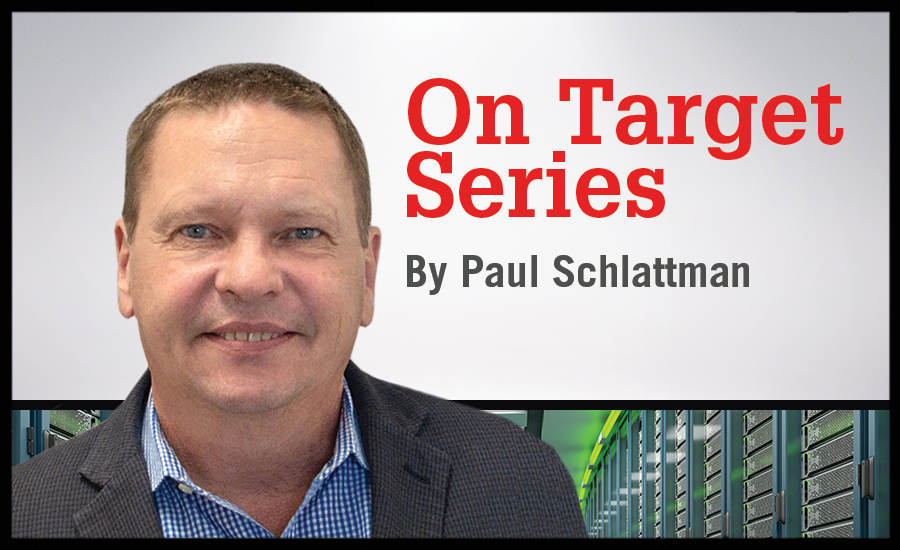In Part One, we discussed developing the program, and Part Two looked at site selection. Within Part Three, we focused on data center planning and the impact planning has on TCO; then in last edition’s column we addressed the selection of a data center collocation/wholesale provider.
Part Five will evaluate the migration process and estimating comparisons of build vs. colocation and the impact of virtualization.
PUSH PULL VS. NETWORK CUTOVER
Now that it has evaluated building its own data center vs. migrating into a wholesale or colocation data center, IT management needs to determine the process of relocating the data center into the new target environment. Over a decade ago, many companies would have chosen to cut over to disaster recovery (DR), pick up their equipment, and move it to the new target data center. Today, data center migration almost completely utilizes network cutover to complete the migration process. This is done by refreshing old equipment into the new target environment. While the data center migration process typically takes longer to achieve, the associated risks are reduced as well as some of the upfront costs to relocate.
DATA CENTER MIGRATION
Recently, ESD provided migration planning in which 13 inefficient data centers ranging from 6,000 sq ft to 10,000 sq ft were consolidated into a single 16,000 sq ft facility. The basis of the consolidation was to migrate into a virtualized environment. The plan was to support half of the data center racks at 12 to 18 kilowatt (kW) per rack and the other half at 30 kW per rack. The migration consisted of a simplistic concept:
- Install new virtualization servers into the target environment and decommission the existing blocks of servers in the remote data center environments.
- The remote environments would act as DR while the new environment was tested to support the business users.
- The new environment would use one server to support five servers from the remote environments. Once the migration of all servers has taken place, further consolidation maximizing server utilization will further reduce the rack footprint.
Two of the key components from an infrastructure standpoint includes: the selection of racks to support new servers and the cable installation. The racks that were designed to support 12 to 18 kW used a hot air exhaust chimney system to the hot air plenum return. It was determined that over 30 kW per rack would need to utilize a “chilled-water to the rack system.” Also, the cable installation needed to be designed and installed prior to any consolidation of server equipment.
The online version of this article at www.missioncriticalmagazine.com includes a process flow diagram of the migration of server equipment into the new data center environment.
ESTIMATING FOR MIGRATION
While the construction estimates for building a new greenfield data center use standard CSI cost metrics, estimating for migration is completely different. The construction industry is very old, and while some of the processes have changed throughout the years, the overall approach to facility design and construction has remained largely the same. IT migration, however, is based upon new technologies. The development of the migration plan evaluates new technologies, critical users (impact of downtime), disaster recovery, new networks, software site licenses, and server utilization factors. Therefore, the estimating of migration costs is continually changing, and the methods of estimating create a higher level of risks compared to construction. Some of the basic estimating guidelines include:
- A recent greenfield project was completed where the migration relocation cost came in at approximately 45% of the construction cost. This included new equipment, software licenses, soft cost, and required personnel.
- Another cost metric for migration is approximately 40 hours per application (internal cost) plus refreshed equipment cost. Cabinets were estimated at $3,800 per cabinet, servers at $3,400 each (depending on the configuration), and cable infrastructure at $80 to $100 per drop.
- ESD has also seen a basic metric for migration at $4.5M per megawatt (MW). This, however, has a higher margin of error than other metrics.
OPERATIONS SUPPORT
When developing operating costs there are several factors that will be required within the final TCO. These costs vary from project to project, but typically include the same components. Some of the operating expenses or OPEX costs include:
- Cost of electrical utility power. Typically estimated at a kW per kilowatt hour, this varies from utility to utility and should be identified during the site selection (power, fiber, and threat (PFT) analysis discussed earlier in Part Two of this series).
- Inclusion of PUE calculations to run mechanical systems. This too is calculated upon a phased increase in cooling requirements and the electrical consumption (utility rate).
- Preventative maintenance (personnel, parts, and preventative maintenance).
- Ongoing staff requirements pursuant to the migration strategy, as well as ongoing server installations and upkeep (reboots, etc.).
- Taxes, including refresh equipment.
- Site licenses for all software.
- Site security (may be provided by the wholesale/collocation provider).
As a rule of thumb, we have seen the OPEX cost and expenses come in at around 19% to 25% of the ongoing wholesale rental cost. Additionally, in the collocation sector, the managed services cost seemingly hits within the 19% to 25% range as well. However, cost increases dramatically overall compared to the wholesale data center model.
The migration plan and the associated costs are typically the last component of cost allocation within the final TCO report. While the migration parameters are usually developed during the interview planning stage of the TCO process, further detailed migration plans hone in the actual costs and reduce risk. Since many companies do not move data centers on an annual basis, getting a migration consultant early on will reduce risk and the margin of error during estimating.


